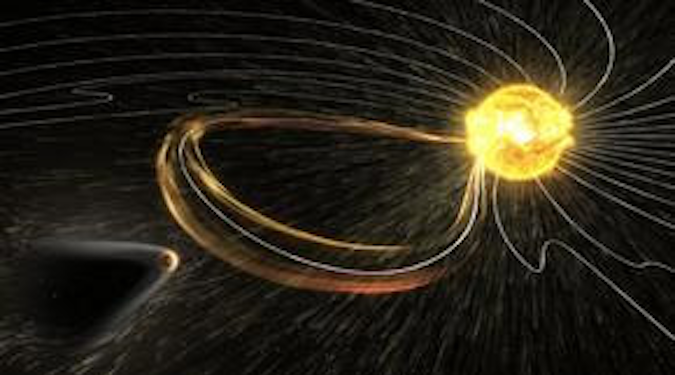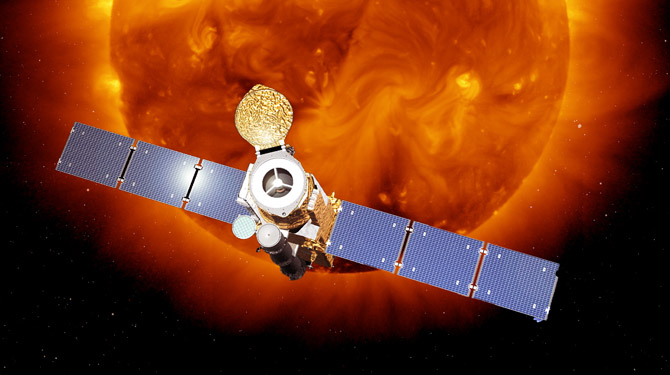Solar Physics

More recently, the solar group at MSSL have been heavily involved with the Hinode mission. We are the Principal Investigating institute for the Extreme Ultraviolet Imaging Spectrometer (EIS) onboard Hinode (see the Hinode/EIS website for more information). Launched in September 2006, Hinode has a suite of instruments on board designed to study the interaction between the Sun's magnetic field and its corona to increase our understanding of the causes of solar variability.
We are also the Co-I institute of the Extreme Ultraviolet Imager (EUI) onboard the current Solar Orbiter mission. An ESA-led mission, Solar Orbiter will provide the first close-up, high latitude observations of the Sun, revealing new insights into the Sun's magnetic field and the solar wind.
Resources:
Solar Physics Outreach:
EIS Science Nuggets
UK Solar Orbiter Website
Solar Physics Meetings:
All Meetings
Seminars
Head of Solar Physics:
Prof. Sarah Matthews
+44 1483 204 208
sarah.matthews@
 Close
Close




